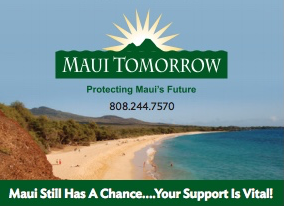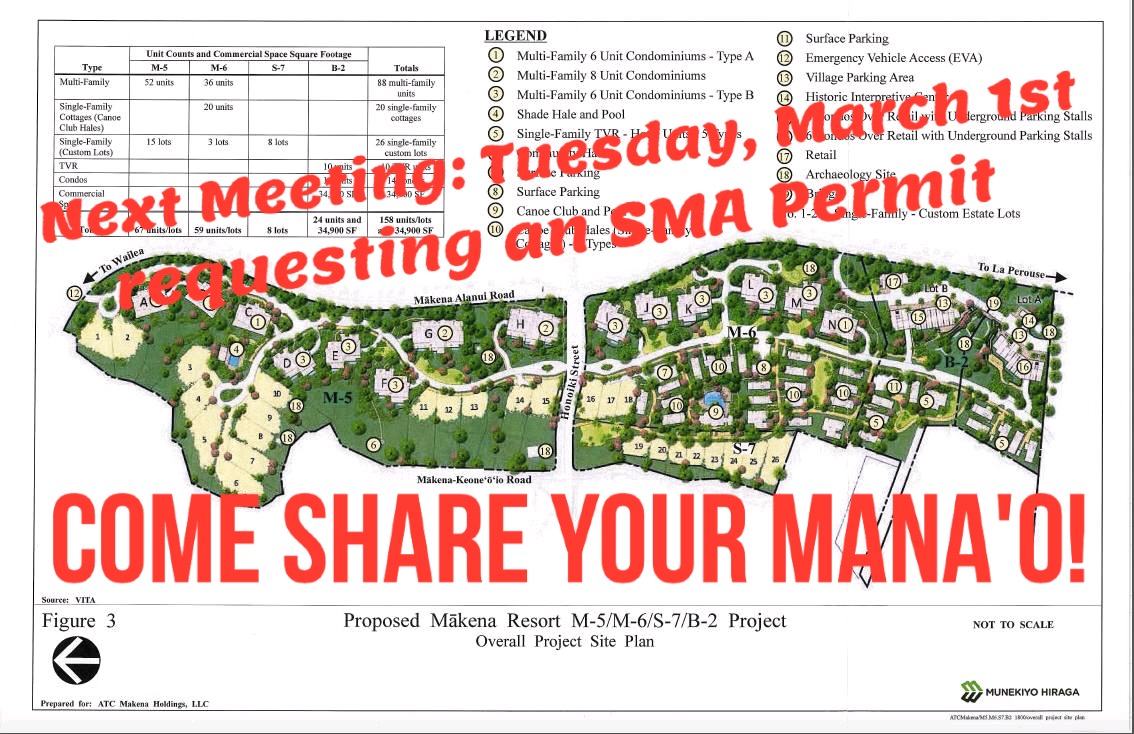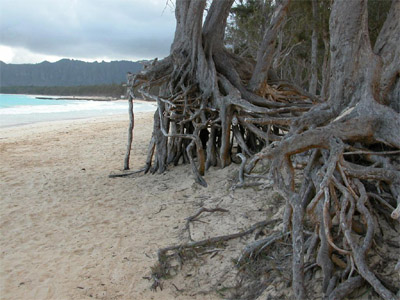Note from NOAA on the renegade Japanese dock and other Marine debris:
I wanted to share this press release that was issued by DLNR yesterday and again, put out the request for any information or sightings of unusual marine debris/potential Japan tsunami marine debris (JTMD), like the dock, to be reported to DLNR’s new hotline (808-587-0400) and sent to us at
disasterdebris@noaa.gov for tracking in our JTMD sightings database.
Have a great weekend and mahalo nui loa for all your help!
Aloha,
Carey
For Immediate Release: September 27, 2012
STATE WORKS WITH FEDERAL PARTNERS TO MONITOR AND RESPOND TO REPORTS OF POSSIBLE TSUNAMI DEBRIS
Contingency plans being prepared to intercept floating dock and handle before it reaches land
HONOLULU — The Department of Land and Natural Resources (DLNR), the state’s lead agency for
responding to reported possible Japan tsunami marine debris in Hawaii, is coordinating with NOAA and
the U.S. Coast Guard to identify the current location of a 30 by 50-foot floating dock that was last seen on
Wednesday, Sept. 19, by fishermen off the north coast of Molokai.
responding to reported possible Japan tsunami marine debris in Hawaii, is coordinating with NOAA and
the U.S. Coast Guard to identify the current location of a 30 by 50-foot floating dock that was last seen on
Wednesday, Sept. 19, by fishermen off the north coast of Molokai.
The dock is believed to be identical to three others reported missing from Japan after the March 2011
tsunami. Another one recently came ashore on an Oregon beach earlier this year.
tsunami. Another one recently came ashore on an Oregon beach earlier this year.
”DLNR’s priority, with the critical help of the public and federal partners, is to re-find this large floating
object, which is a hazard to vessels at sea and the wellbeing of our coastal resources. We need to be able
to track its movement to try to intercept and handle the dock at sea, and to prevent serious environmental
damage if it should reach shore,” said William J. Aila, Jr., DLNR chairperson.
object, which is a hazard to vessels at sea and the wellbeing of our coastal resources. We need to be able
to track its movement to try to intercept and handle the dock at sea, and to prevent serious environmental
damage if it should reach shore,” said William J. Aila, Jr., DLNR chairperson.
DLNR has requested that boaters, fishers and pilots be alert to the possible presence of the dock and to
immediately report any sightings of the dock to (808) 587-0400. NOAA is also requesting that sightings
of marine debris be reported to diasterdebris@noaa.gov.
immediately report any sightings of the dock to (808) 587-0400. NOAA is also requesting that sightings
of marine debris be reported to diasterdebris@noaa.gov.
The Japan Consulate in Honolulu has been notified and, if the dock is relocated, will work with DLNR
and NOAA to confirm the dock’s origin.
and NOAA to confirm the dock’s origin.
DLNR and the Department of Health (with assistance as needed from other state agencies) along with
NOAA, the U.S. Coast Guard and U.S .Environmental Protection Agency (EPA) are working together on
the Hawaii response to marine debris from the 2011 Japan earthquake and resulting tsunami. The interagency
working group is coordinating with various federal, state and county partners, as appropriate, to
facilitate response and regularly communicate to the public. NOAA continues to assist with model
trajectories for possible movement of the dock by currents and winds, and has readied two satellite
tracking buoys for state use should the dock be located.
NOAA, the U.S. Coast Guard and U.S .Environmental Protection Agency (EPA) are working together on
the Hawaii response to marine debris from the 2011 Japan earthquake and resulting tsunami. The interagency
working group is coordinating with various federal, state and county partners, as appropriate, to
facilitate response and regularly communicate to the public. NOAA continues to assist with model
trajectories for possible movement of the dock by currents and winds, and has readied two satellite
tracking buoys for state use should the dock be located.
On Tuesday, DLNR received a call from a Molokai resident who reported seeing styrofoam on a rocky
cliff shoreline on the Molokai north coast. DLNR arranged for its Maui helicopter contractor to survey the
north shores of Molokai and Lanai yesterday afternoon. Two staff members from the Division of Aquatic
Resources Maui office participated as observers. A large quantity of foam pieces were noticed west of
Moomomi and a ball of fishing debris. However there was no sighting of the dock in either location.
DLNR also received a report yesterday from a Laie resident who had found two large and one smaller
black buoy on a local beach. There was no marine growth on them. The buoys were tested by the
Department of Health and normal background levels of radiation were found.
cliff shoreline on the Molokai north coast. DLNR arranged for its Maui helicopter contractor to survey the
north shores of Molokai and Lanai yesterday afternoon. Two staff members from the Division of Aquatic
Resources Maui office participated as observers. A large quantity of foam pieces were noticed west of
Moomomi and a ball of fishing debris. However there was no sighting of the dock in either location.
DLNR also received a report yesterday from a Laie resident who had found two large and one smaller
black buoy on a local beach. There was no marine growth on them. The buoys were tested by the
Department of Health and normal background levels of radiation were found.
—————————————————————————————————————–
HOW TO REPORT FINDINGS OF POSSIBLE TSUNAMI MARINE DEBRIS:
The public is invited to contact DLNR at (808) 587-0400 to report findings of possible tsunami marine
debris. If possible, we request that a picture of the debris with a detailed description of the object, date
found, location and finder’s contact information, be sent to dlnr@hawaii.gov this information will help
DLNR staff to determine if a more thorough investigation is necessary. Reports may also made to NOAA
at DiasasterDebris@noaa.gov DisasterDebris@noaa.gov
—————————————————————————————————————–
HOW TO REPORT FINDINGS OF POSSIBLE TSUNAMI MARINE DEBRIS:
The public is invited to contact DLNR at (808) 587-0400 to report findings of possible tsunami marine
debris. If possible, we request that a picture of the debris with a detailed description of the object, date
found, location and finder’s contact information, be sent to dlnr@hawaii.gov this information will help
DLNR staff to determine if a more thorough investigation is necessary. Reports may also made to NOAA
at DiasasterDebris@noaa.gov DisasterDebris@noaa.gov
—————————————————————————————————————–
DLNR staff also checked out a large piece of yellow foam that was reported in Kahaluu earlier this week.
It measured 4 inches wide by 4 feet long, with chicken wire molded between. It had a small amount of
gooseneck barnacles (not of concern) on one side, but no other growth. There were no identifying marks
and it did not look to be tsunami generated.
It measured 4 inches wide by 4 feet long, with chicken wire molded between. It had a small amount of
gooseneck barnacles (not of concern) on one side, but no other growth. There were no identifying marks
and it did not look to be tsunami generated.
Other actions to locate the floating dock
Between September 21 and 22, the U.S. Coast Guard conducted three flights where Coast Guard aircrews
were able to observe the area between Molokai and Oahu for any sign of marine debris. No sightings
were reported, and the dock has not yet been relocated. The Coast Guard also used a search and rescue
computer program to plot the potential drift of the object using the last reported sighting of the dock from
local fishermen on September 19.
Between September 21 and 22, the U.S. Coast Guard conducted three flights where Coast Guard aircrews
were able to observe the area between Molokai and Oahu for any sign of marine debris. No sightings
were reported, and the dock has not yet been relocated. The Coast Guard also used a search and rescue
computer program to plot the potential drift of the object using the last reported sighting of the dock from
local fishermen on September 19.
The Coast Guard has systems in place to report significant objects and other hazards in the water through
the issuance of notice to mariners. A broadcast notice to mariners has been issued that contains a
description of the floating dock, the time and date it was sighted and the last known location. Cmdr.
Martin Smith, chief of marine environmental response for the 14th Coast Guard District said, “The Coast
Guard would like to remind mariners, as always, to remain on the lookout for debris or any other dangers
while at sea.”
the issuance of notice to mariners. A broadcast notice to mariners has been issued that contains a
description of the floating dock, the time and date it was sighted and the last known location. Cmdr.
Martin Smith, chief of marine environmental response for the 14th Coast Guard District said, “The Coast
Guard would like to remind mariners, as always, to remain on the lookout for debris or any other dangers
while at sea.”
In conjunction with routine Coast Guard HC-130 Hercules airplane law enforcement deployments and
surveillance patrols of the Papahanaumokuakea Marine Monument, the Coast Guard has been on the
lookout for marine debris in an attempt to help NOAA identify and track it. On December 6, 2011, one
such flight provided surveillance of a 58,000 square mile area off Midway; an area approximately the size
of the state of Alabama. A small refrigerator was sighted, but nothing else.
surveillance patrols of the Papahanaumokuakea Marine Monument, the Coast Guard has been on the
lookout for marine debris in an attempt to help NOAA identify and track it. On December 6, 2011, one
such flight provided surveillance of a 58,000 square mile area off Midway; an area approximately the size
of the state of Alabama. A small refrigerator was sighted, but nothing else.
On January 17, 2012, a second Hercules, with observers from NOAA and EPA aboard, provided
surveillance covering 78,700 square miles; an area approximating the size of the state of North Dakota.
No debris whatsoever was sighted. Both of these flights were conducted in an area of the highest
risk/probability of forecast debris approaching the Northwest Hawaiian Islands, using University of
Hawaii and NOAA drift modeling data. Routine law enforcement patrols continue to provide
opportunities to search for marine debris.
The state is also collaborating with the Papahanaumokuakea Marine National Monument as well as
external stakeholders to assess and monitor the movement of other Japan tsunami marine debris. The
Japan Ministry of the Environment estimates that 5 million tons of debris washed into the ocean (not the
25 million tons according to initial estimates). They further estimated that 70 percent of debris sank near
the coast of Japan soon after the tsunami. Models and estimates completed by NOAA and the University
of Hawai‘i reveal that some high-floating debris may have passed near or washed ashore on the Main and
Northwestern Hawaiian Islands as early as this summer. During the summer, debris was found along the
Pacific Coast of North America from Alaska southward to California.
external stakeholders to assess and monitor the movement of other Japan tsunami marine debris. The
Japan Ministry of the Environment estimates that 5 million tons of debris washed into the ocean (not the
25 million tons according to initial estimates). They further estimated that 70 percent of debris sank near
the coast of Japan soon after the tsunami. Models and estimates completed by NOAA and the University
of Hawai‘i reveal that some high-floating debris may have passed near or washed ashore on the Main and
Northwestern Hawaiian Islands as early as this summer. During the summer, debris was found along the
Pacific Coast of North America from Alaska southward to California.
Because most tsunami debris was washed out to sea before the release of radioactive materials from the
power plant and because of its extended exposure to the elements, it is highly unlikely that the debris
would be contaminated.
Even though the likelihood of discovering radioactive contamination on marine debris is low, the state
Department of Health has been conducting shoreline surveillance since April 2011, in order to establish
normal background radiation levels around the islands. The state Department of Health continues to
conduct quarterly shoreline environmental surveys on O‘ahu, Maui. Kaua‘i, and the Hawai‘i Island.
Results of the surveys performed displays consistency with normal background radiation levels.
Additionally, the state Department of Health has partnered with NOAA to perform shoreline and debris
monitoring on the Northwestern Hawaiian Islands.
Department of Health has been conducting shoreline surveillance since April 2011, in order to establish
normal background radiation levels around the islands. The state Department of Health continues to
conduct quarterly shoreline environmental surveys on O‘ahu, Maui. Kaua‘i, and the Hawai‘i Island.
Results of the surveys performed displays consistency with normal background radiation levels.
Additionally, the state Department of Health has partnered with NOAA to perform shoreline and debris
monitoring on the Northwestern Hawaiian Islands.
Carey Morishige, Pacific Islands regional coordinator
NOAA Marine Debris Program / IMSG
Office of Response and Restoration
737 Bishop Street, Suite 2250
Honolulu, HI 96813



